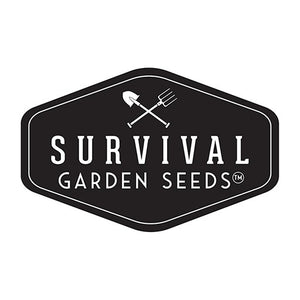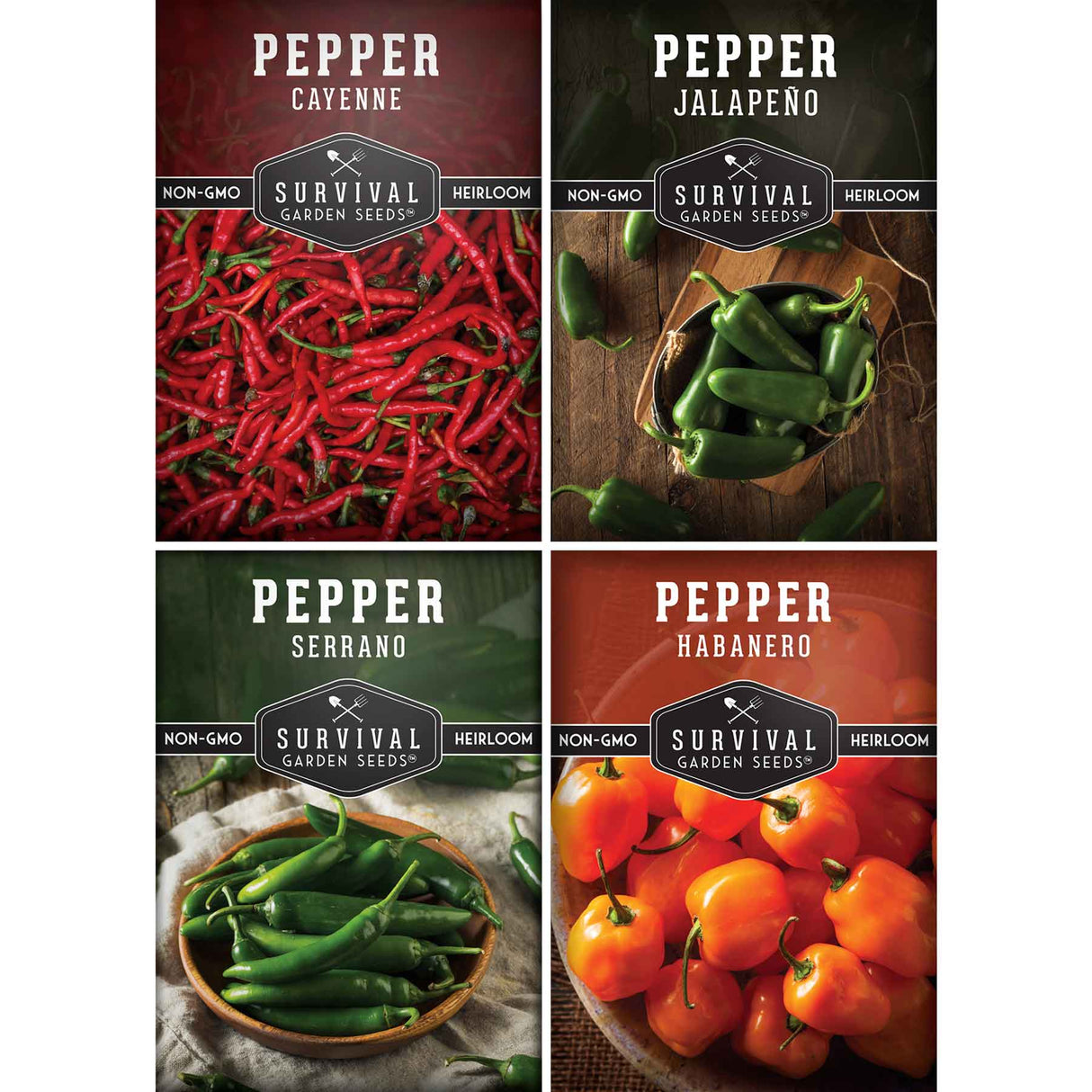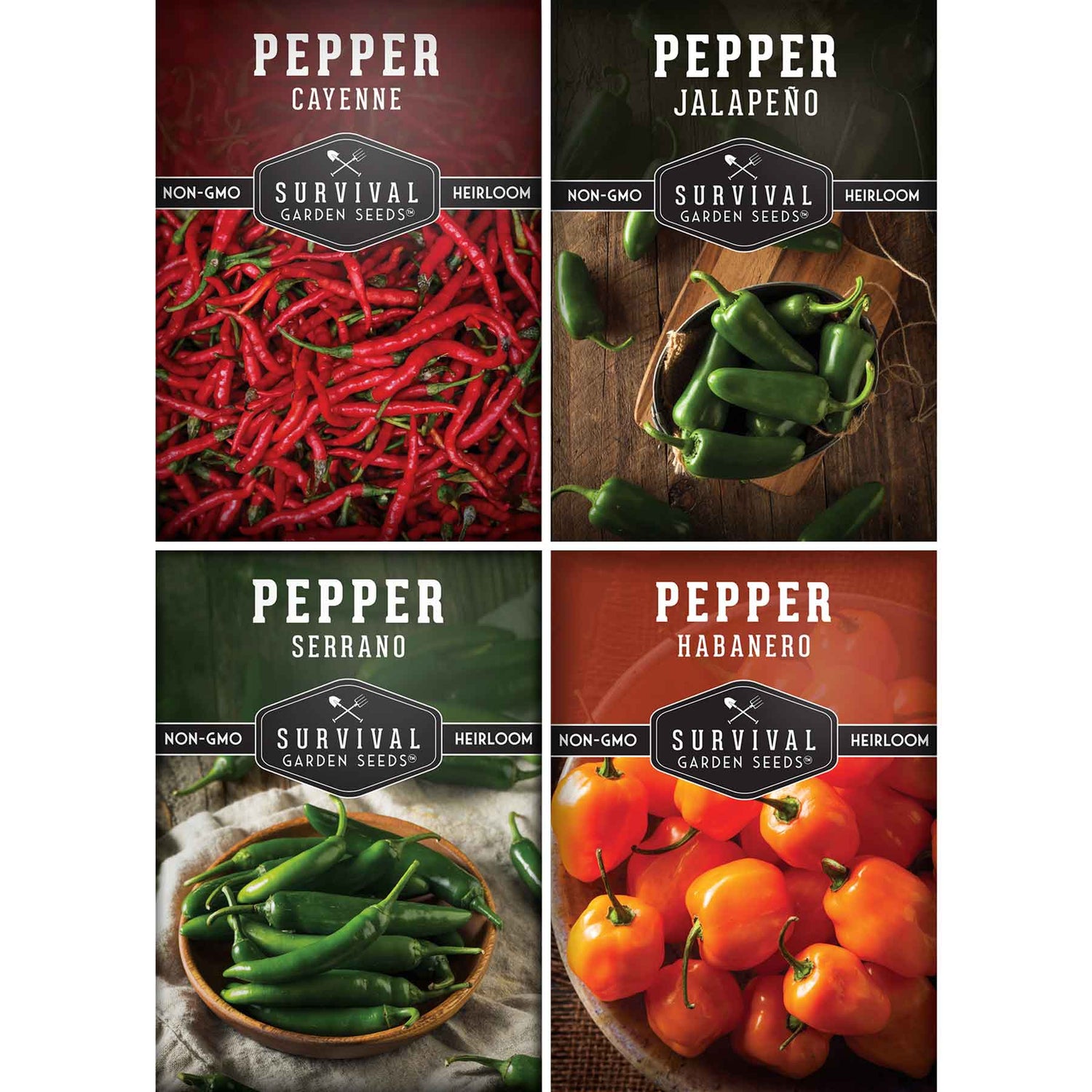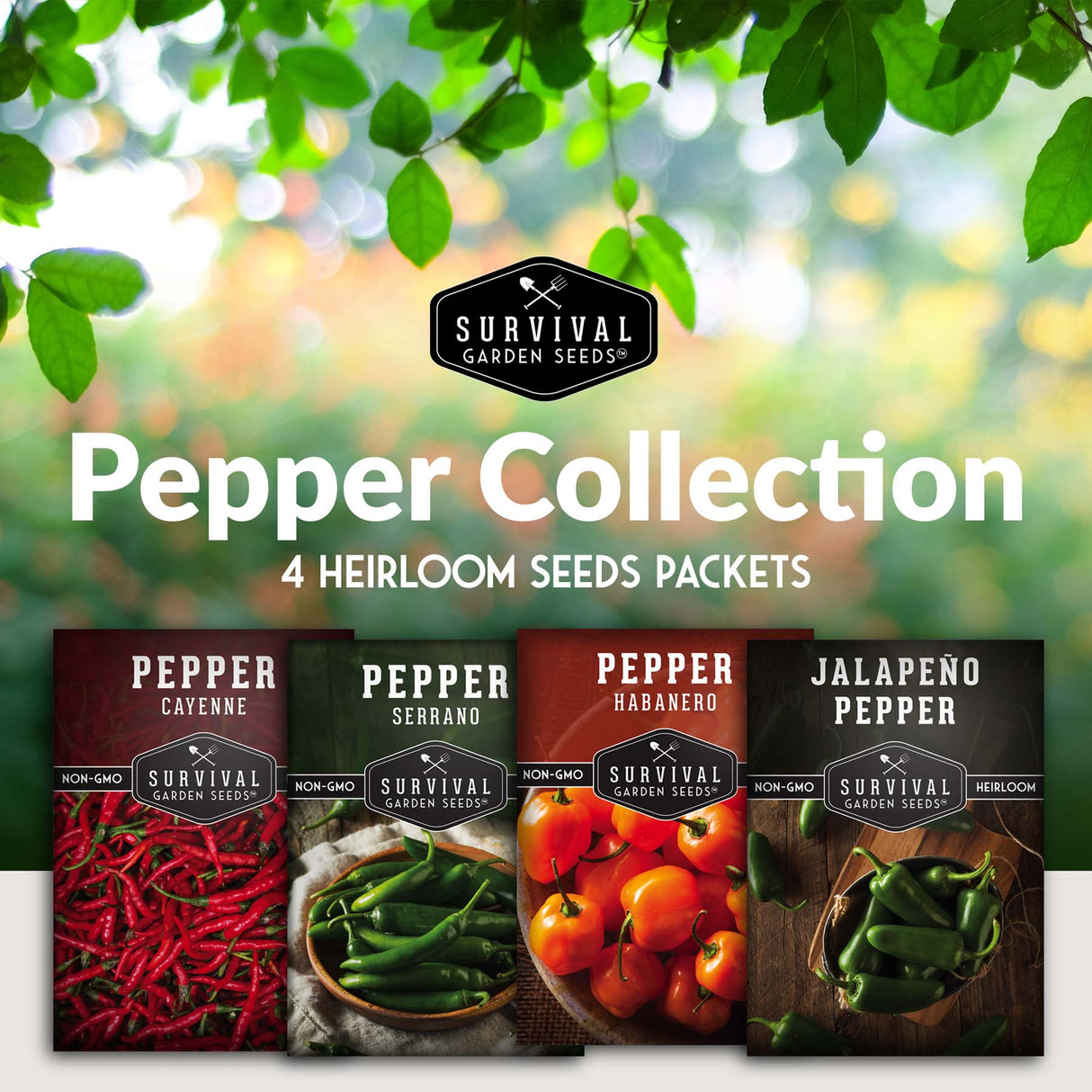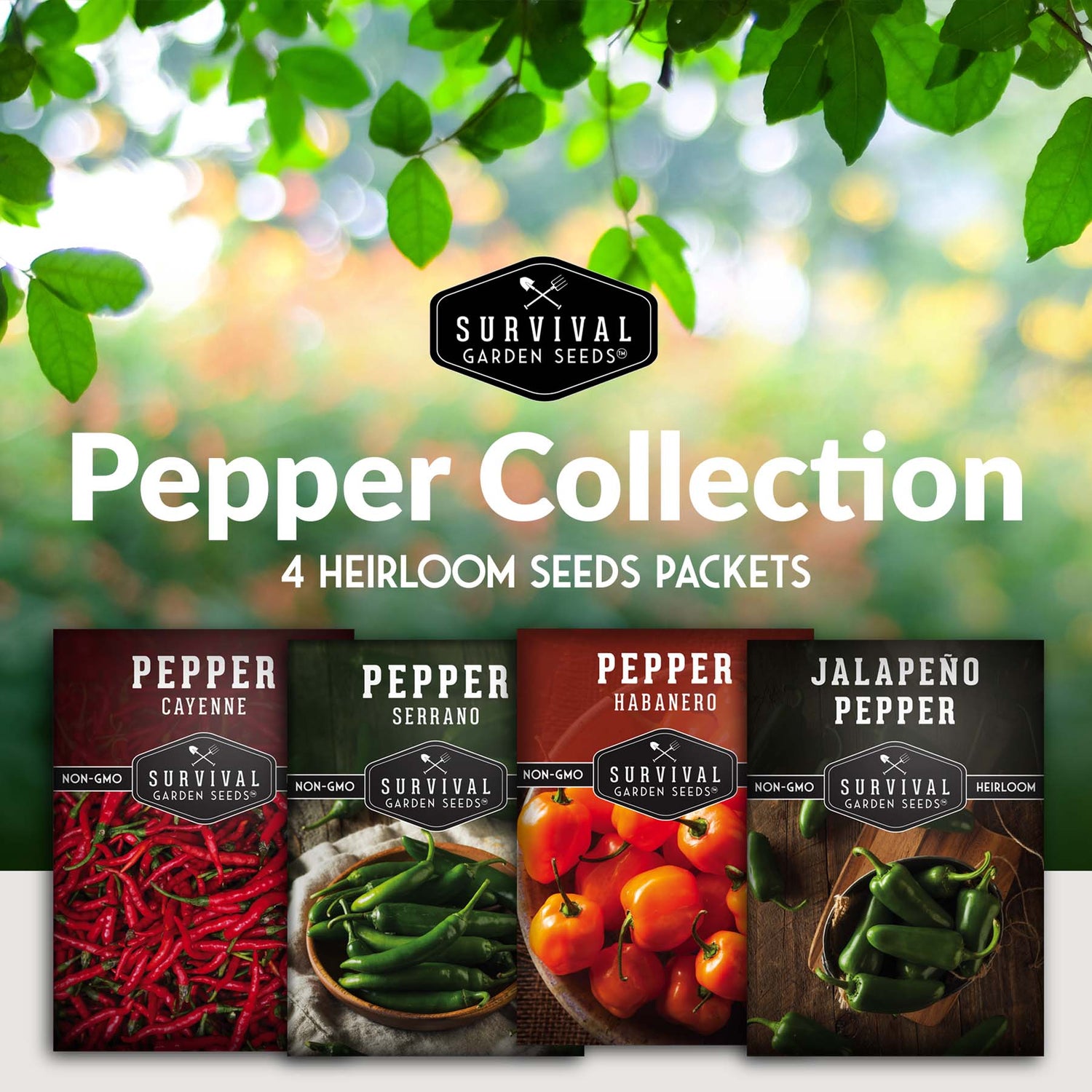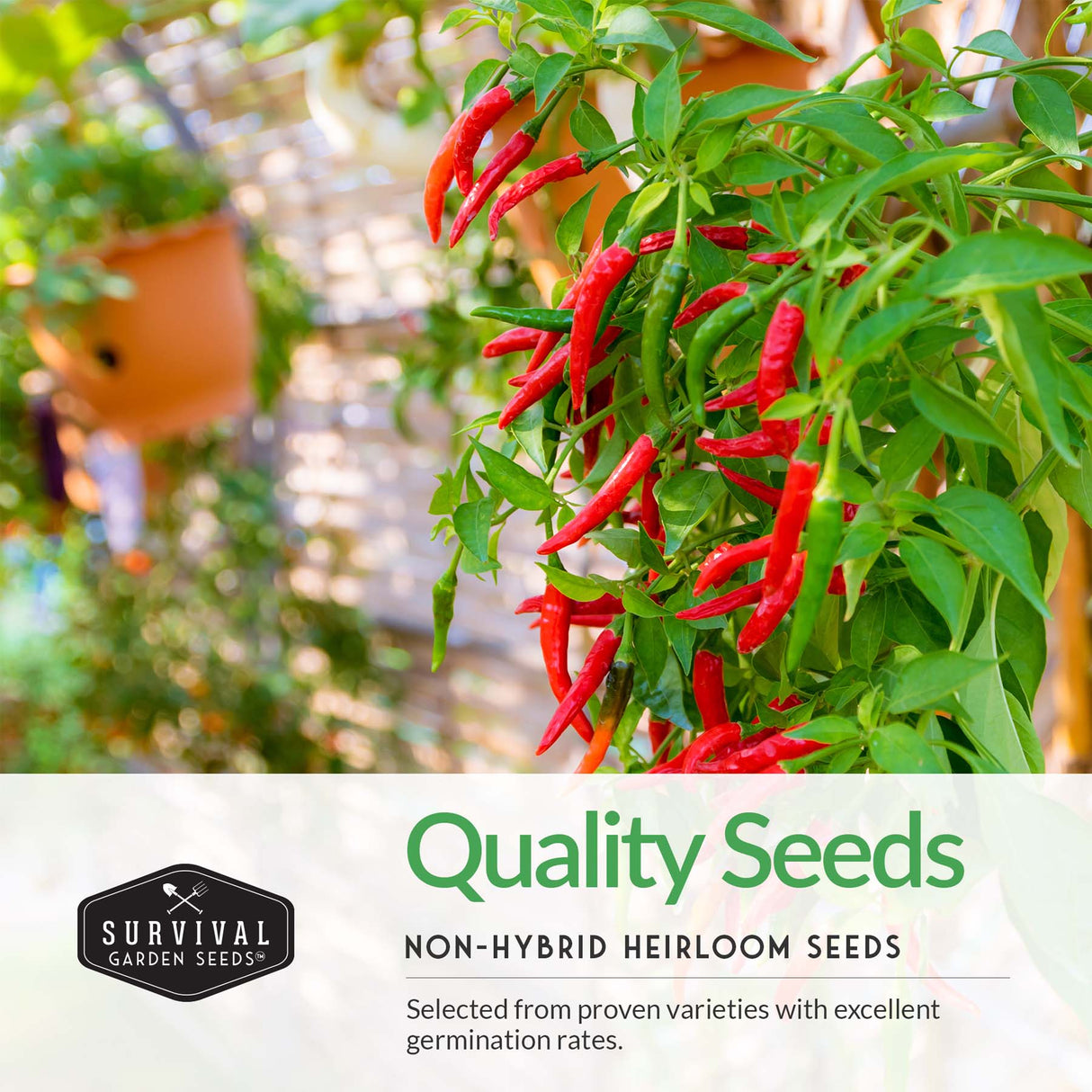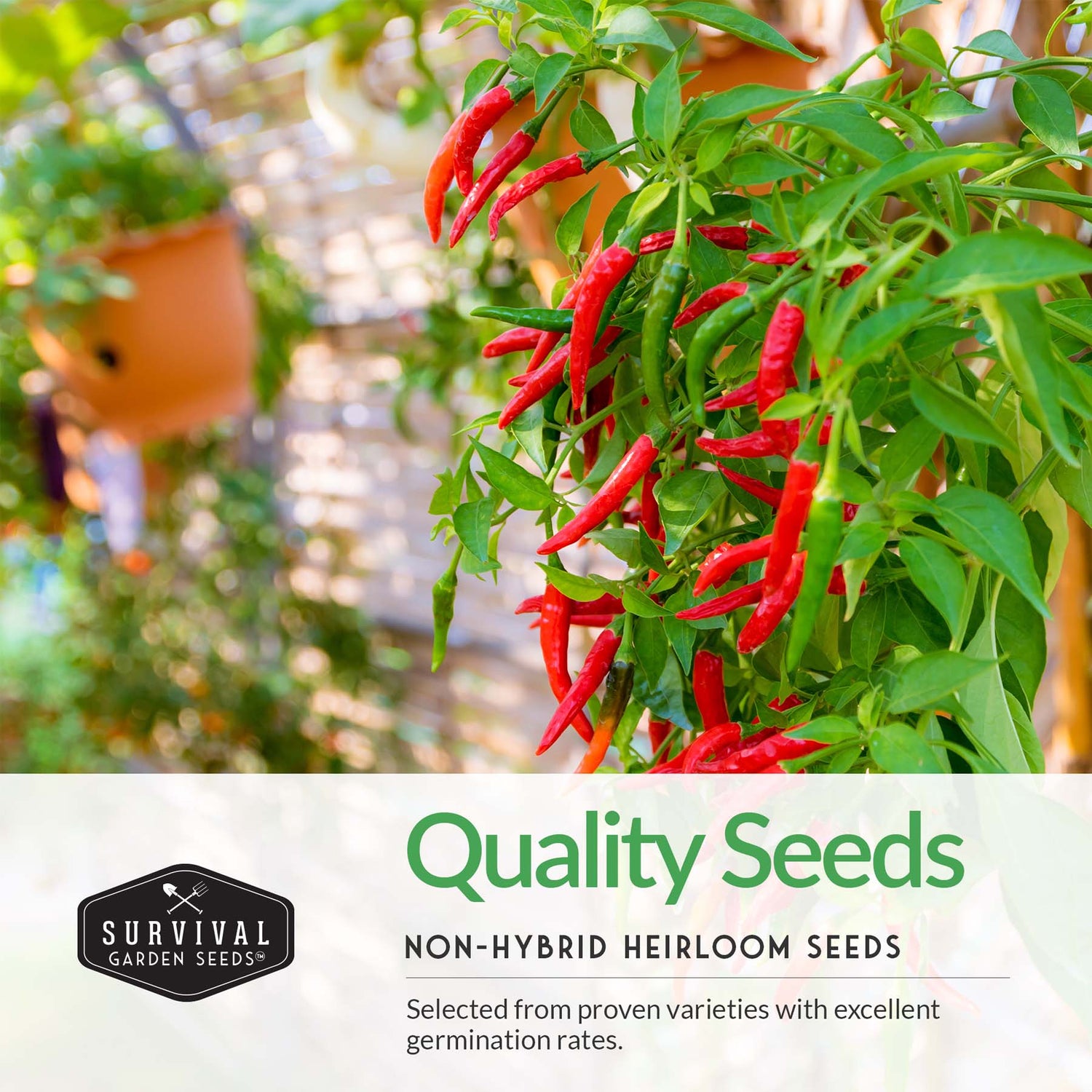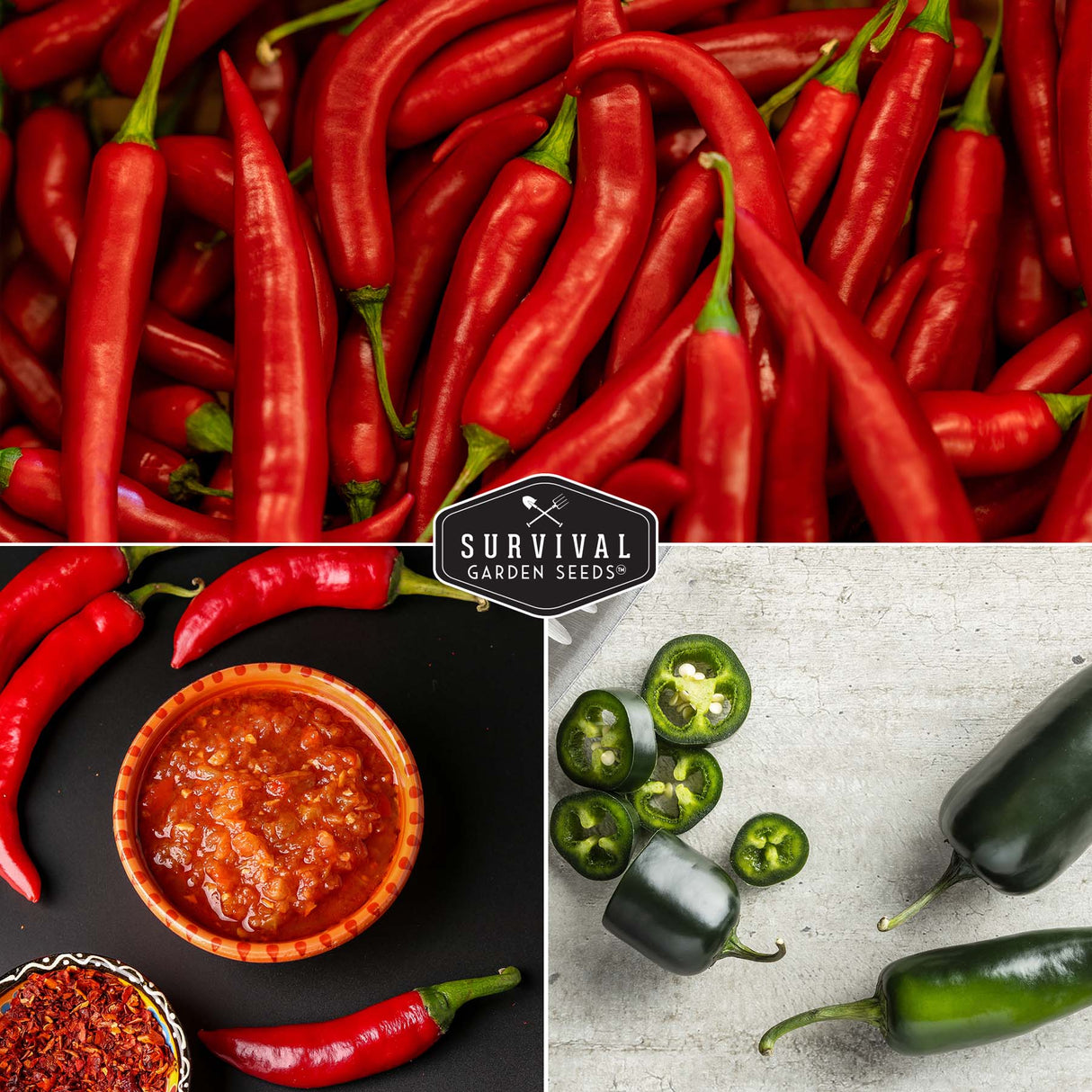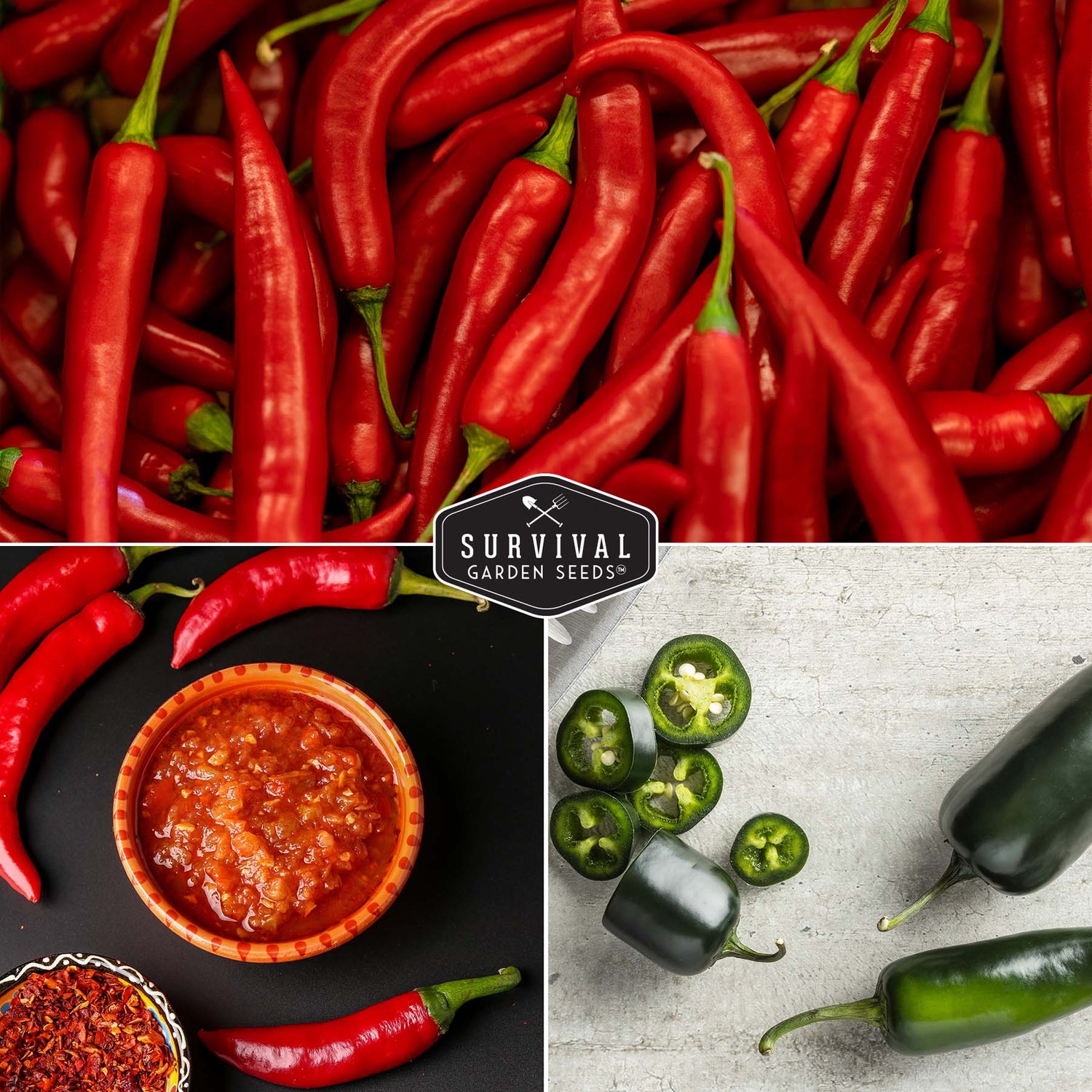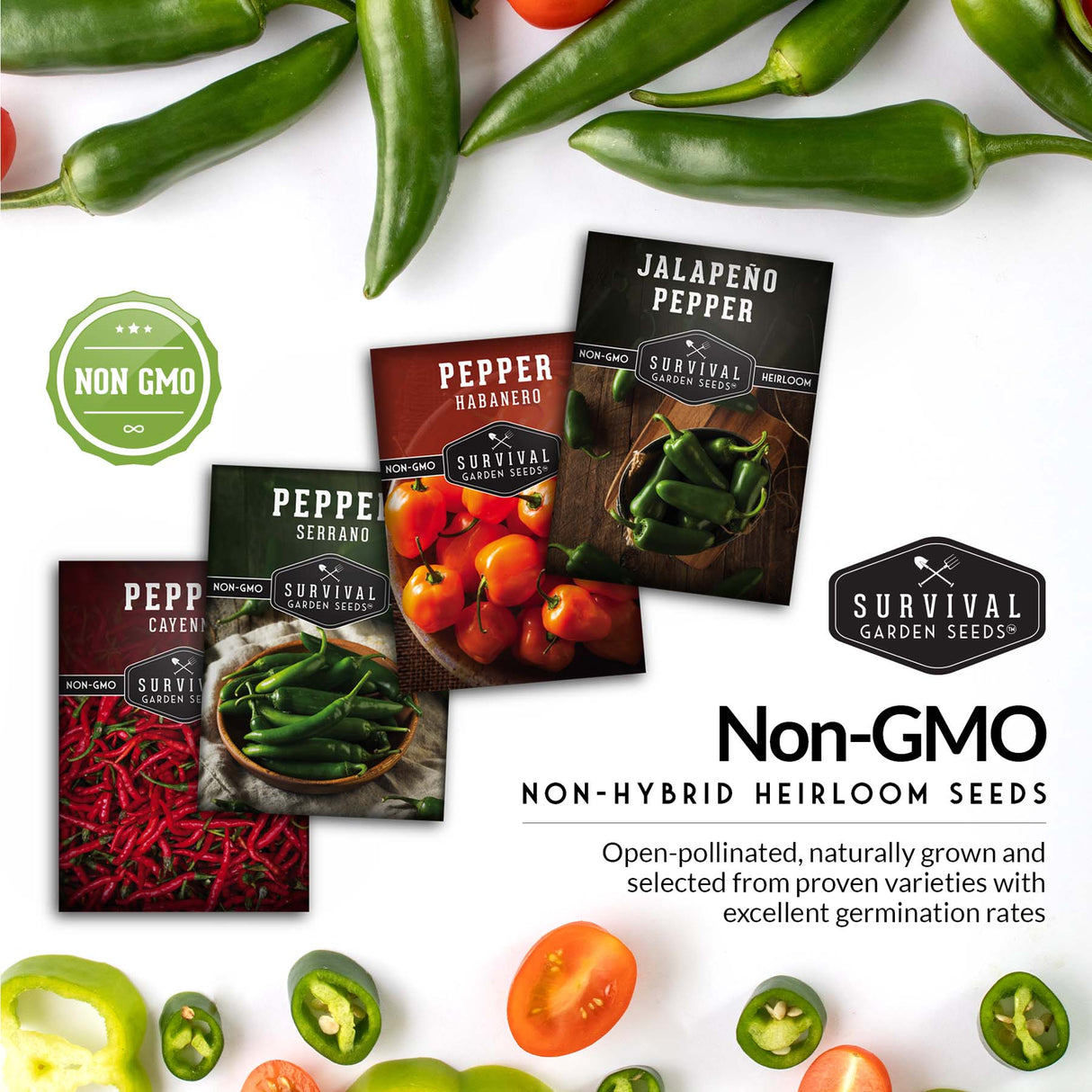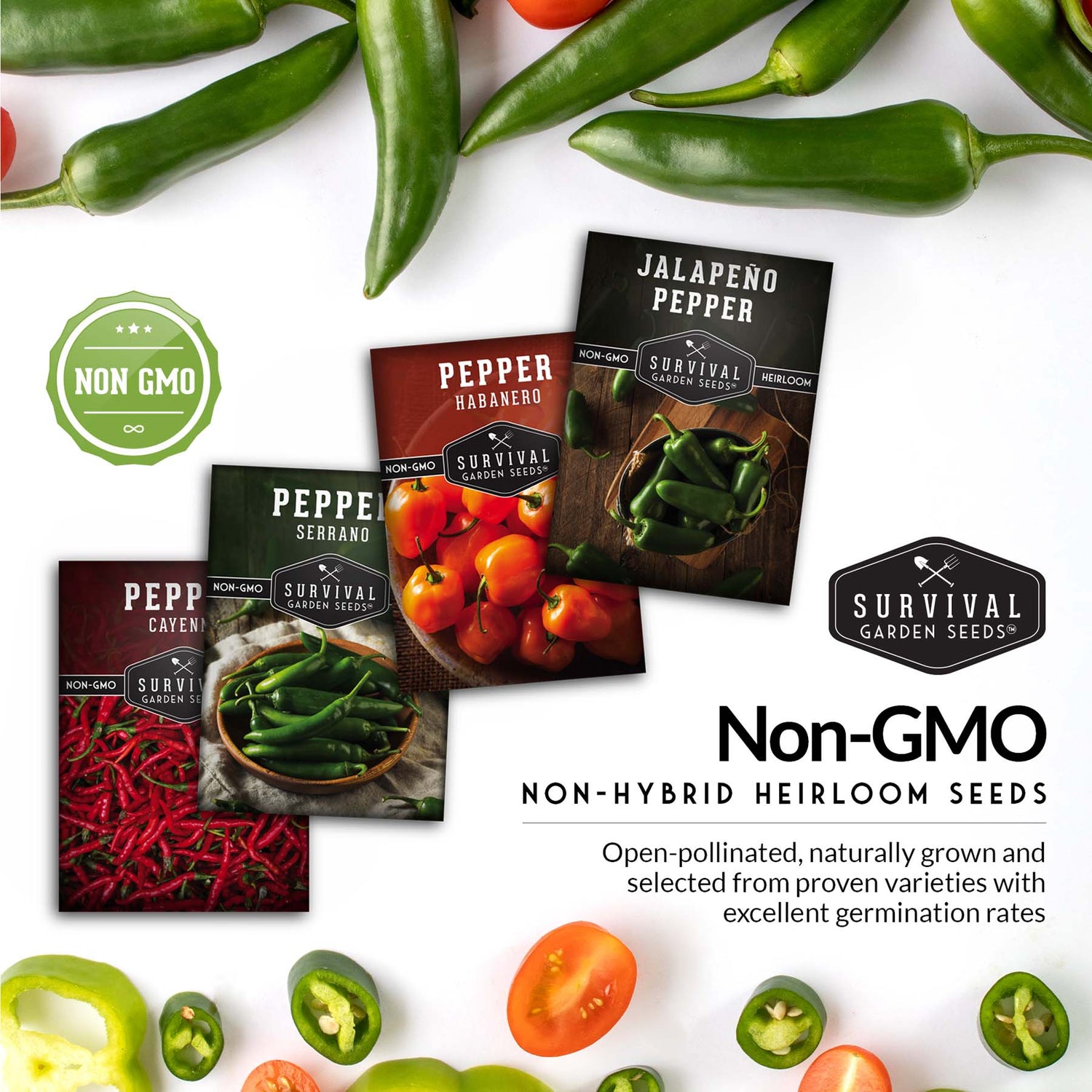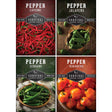Hot Pepper Seed Collection – Heirloom Non-GMO 4-Variety Pack: Jalapeño, Serrano, Cayenne & Habanero Orange for Salsas, Sauces & Spicy Cooking
Heirloom - Non-GMO - Reliable Germination
Hot Pepper Seed Collection – Heirloom Non-GMO 4-Variety Pack: Jalapeño, Serrano, Cayenne & Habanero Orange for Salsas, Sauces & Spicy Cooking is backordered and will ship as soon as it is back in stock.
Couldn't load pickup availability
Turn up the flavor in your garden with the Hot Pepper Seed Collection from Survival Garden Seeds. This curated 4-pack includes four of the most popular heirloom Capsicum annuum and Capsicum chinense varieties—Jalapeño, Serrano, Cayenne, and Habanero Orange—chosen for their vibrant heat, bold flavor, and reliable performance in home gardens.
Perfect for salsas, sauces, pickling, and seasoning, this set covers the full spice spectrum—from the medium heat of Jalapeño and Serrano to the bold kick of Cayenne and the tropical fire of Habanero Orange. Each variety is productive, flavorful, and adaptable, offering home gardeners a dynamic mix of spice levels for cooking and preserving.
Balanced Heat, Flavor, and Reliability:
- Jalapeño: Mild to medium heat with rich flavor for everyday use
- Serrano: Crisp and bright with medium-high spice—great for fresh salsas
- Cayenne: Long, slender peppers ideal for drying, flakes, or powder
- Orange Habanero: Fruity, fiery heat perfect for hot sauces and marinades
- Matures in 70–120 days, depending on variety
Why Gardeners Love This Collection:
- Includes four heirloom, open-pollinated, non-GMO varieties
- High germination and reliable yields across USDA zones 4–11
- Compact 18–30 inch plants thrive in containers or garden beds
- Excellent for self-sufficient growing, food preservation, or spice making
- Ideal for gifting, preparedness kits, or seed-saving enthusiasts
How to Grow:
- Start seeds indoors 6–8 weeks before your final frost date.
- Maintain soil temperatures of 75–90°F for optimal germination (7–14 days).
- Transplant outdoors after frost risk passes and soil has warmed.
- Grow in full sun and well-drained soil with regular watering.
- Harvest throughout summer for continuous yields and peak flavor.
Heirloom Garden Seeds
All of our seeds are open-pollinated, non-GMO, heirloom varieties with tested germination rates
Payment & Security
Payment methods
Your payment information is processed securely. We do not store credit card details nor have access to your credit card information.
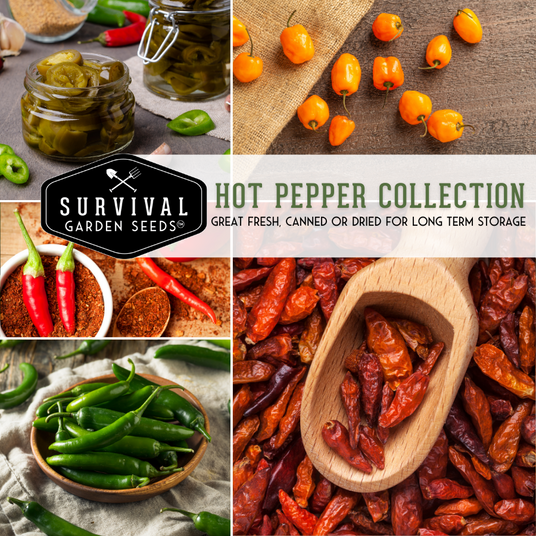
Bring On the Heat
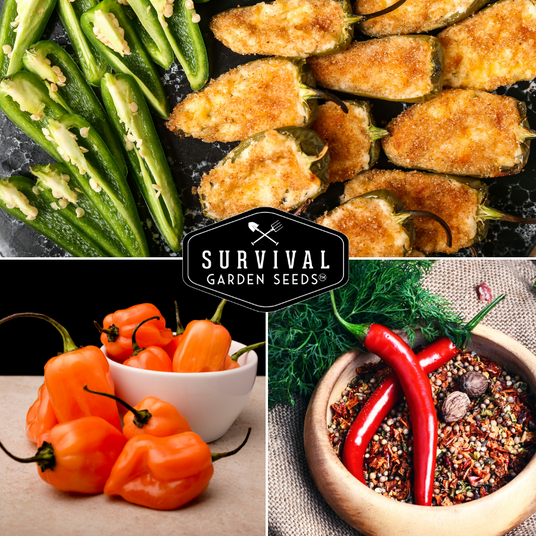
Warm Weather Crop
Why Choose Survival Garden Seeds
At Survival Garden Seeds, we believe in preparing today for tomorrow’s peace of mind. That’s why we offer only heirloom, non-GMO, and untreated seeds you can trust to nourish your family and support a sustainable lifestyle. As a family-owned American company, we’re committed to providing seeds that grow strong and true—helping you cultivate health, resilience, and beauty in your garden.
Frequently Asked Questions
Are your seeds heirloom and open-pollinated?
Are your seeds heirloom and open-pollinated?
Yes. All of our seeds are heirloom, open-pollinated varieties, which means they can produce seeds that grow true to type and are suitable for seed saving.
You can learn more about open-pollinated, heirloom, and non-GMO seeds in our Survival Garden Training blog.
Are your seeds non-GMO?
Are your seeds non-GMO?
Yes. All Survival Garden Seeds are 100% non-GMO. Our seeds are open-pollinated heirloom varieties and are never genetically modified.
Are your seeds treated with chemicals?
Are your seeds treated with chemicals?
No. Our seeds are completely untreated and free from chemical coatings, fungicides, or synthetic treatments.
How do I know my seeds are fresh?
How do I know my seeds are fresh?
Every seed packet includes a packed-for date, and we germination-test each seed lot before packaging to ensure high viability.
What is the shelf life of your seeds?
What is the shelf life of your seeds?
Most seeds remain viable for 3 to 5 years or longer when stored properly in a cool, dry place away from light and moisture.
In what USDA hardiness zones can I grow your seeds?
In what USDA hardiness zones can I grow your seeds?
Our varieties are selected to grow successfully across USDA Hardiness Zones 3 through 10. Each packet includes variety-specific planting guidance and germination tips.
